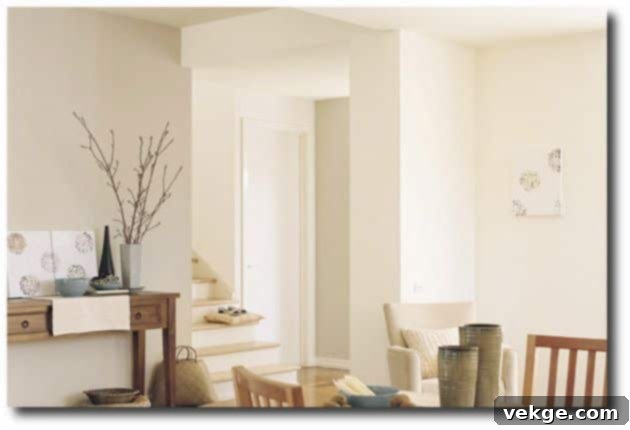Mastering Off-White: The Ultimate Guide to Pairing Furniture with Off-White Paint Colors
Off-white paint colors have emerged as a cornerstone in contemporary home design, captivating the attention of leading interior designers and homeowners alike. Their enduring popularity stems from a remarkable blend of versatility, timeless elegance, and an uncanny ability to adapt to virtually any aesthetic or color palette. Beyond mere wall coverings, the thoughtful decoration of your home is a deeply personal and transformative process, shaping the atmosphere into one that feels lively, joyful, peaceful, and uniquely yours.
At the heart of any well-decorated space lies its furniture. It’s impossible to envision a comfortable and functional home without it, as furniture dictates the flow, purpose, and overall comfort of each room. If you’ve embraced the sophisticated charm of off-white paint on your walls, the next exciting challenge is to select furniture that not only complements but truly elevates your chosen backdrop. This guide will walk you through essential tips and creative ideas to flawlessly match your furniture with off-white walls, ensuring a cohesive and stunning interior.
1. The Heart of the Home: Kitchen Decor with Off-White
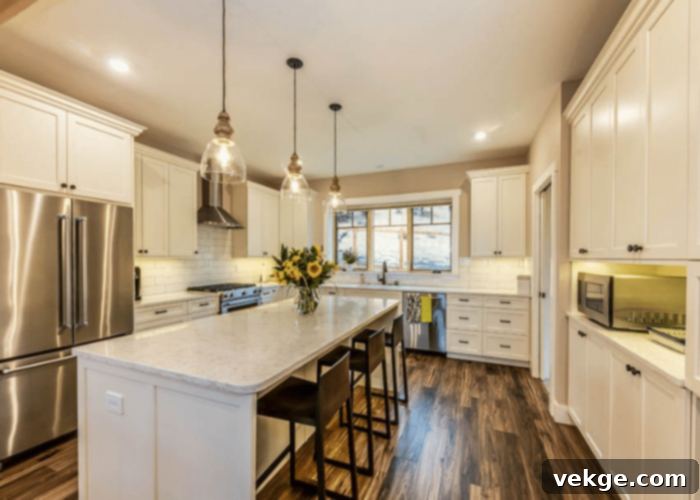
The kitchen, often considered the soul of the home, benefits immensely from the serene backdrop of off-white paint. To create a harmonious and inviting culinary space, consider extending the off-white palette to your cabinetry for a seamless, expansive look. Alternatively, introduce contrast and texture with light-colored cabinets in soft grays, warm beiges, or natural wood tones. If painting isn’t an option, focus on kitchen sets and utensils that echo the off-white vibe. Stainless steel appliances, light wood cutting boards, cream-colored ceramics, or even a subtle patterned backsplash can tie the room together beautifully. The key is to select elements that either blend subtly with the off-white or offer a gentle, complementary contrast without overwhelming the calm foundation.
2. Crafting a Haven: Bedroom Design with Off-White Walls
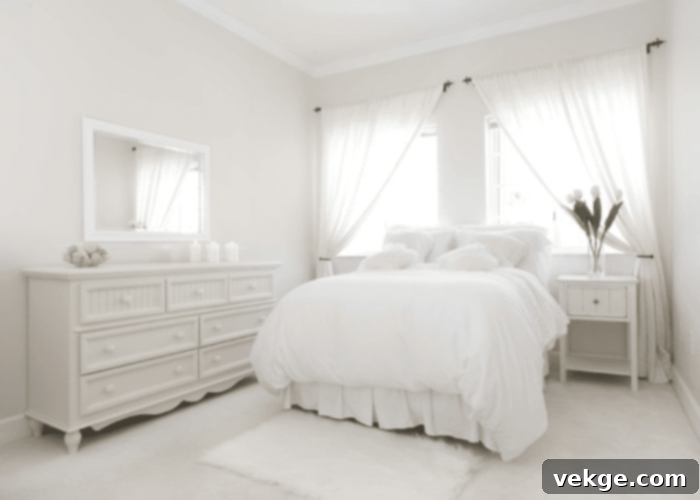
Your bedroom should be a sanctuary of peace and comfort, and off-white walls provide the perfect foundation for achieving this. Beyond simply painting the walls in an off-white shade, there are numerous ways to integrate furniture and decor to enhance the room’s tranquility. For bedding, opt for light-colored or off-white pillow covers, duvet covers, and bed sheets in luxurious textures like linen or cotton. Introduce a wooden headboard in a light or medium tone to add warmth, or choose an upholstered headboard in a complementary neutral like a soft grey or a pale blush. Nightstands and dressers in natural wood, painted white, or a muted pastel can maintain the serene aesthetic. Don’t forget soft rugs, delicate lighting, and subtle artwork to complete your restful retreat.
3. The Power of Textiles: Pillow Covers and Soft Furnishings
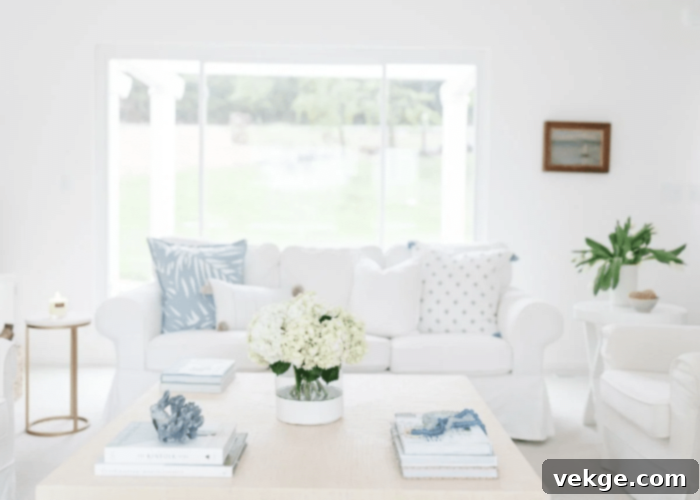
Pillow covers, throws, and other soft furnishings are indispensable tools for adding color, texture, and personality to a room. While they are a staple in the bedroom, decorative pillows also play a crucial role on sofas, accent chairs, and even window seats. When pairing with off-white walls, consider the overall mood and existing furniture. For a bold statement, choose rich colors like deep maroon, elegant navy blue, romantic rose, or vibrant red. These hues provide a striking, regal contrast against the understated off-white. For a softer look, explore shades of sage green, dusty blue, mustard yellow, or subtle patterns that incorporate off-white. The texture of the fabric—velvet, linen, knit—can also significantly impact the room’s feel, adding depth and warmth to your off-white canvas. Remember, textiles are an easy and affordable way to refresh your decor seasonally or as your style evolves.
4. Enhancing Walls: Artworks and Gallery Walls
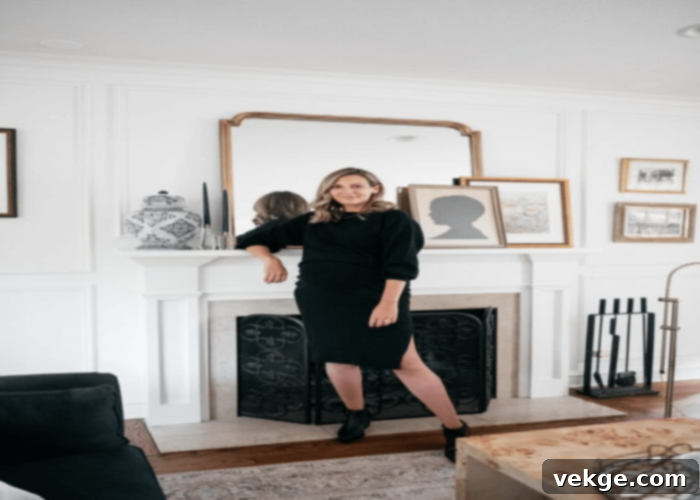
Artworks are not just decorative elements; they are conversation starters that reflect your personal style and add depth to any part of the house. With off-white walls, you have the perfect gallery-like backdrop to make your chosen pieces truly pop. To match the artwork with its surroundings, consider the color palette within the art itself. You can select pieces that subtly echo existing furniture colors, or introduce entirely new hues to create focal points. Frames play an equally important role. Opt for natural wood frames for a rustic or Scandinavian vibe, sleek black or metallic frames for a modern touch, or ornate gold/silver frames for a classic, luxurious feel. You can even express your creativity by crafting your own unique art pieces or a personalized gallery wall. Mix and match different sizes, styles, and frame types to create a dynamic and visually engaging display that complements your off-white foundation.
5. The Detail in Design: Frames and Borders
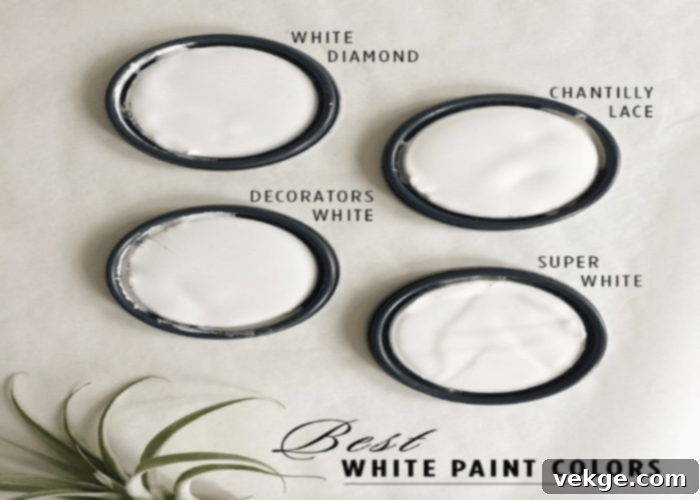
Frames extend beyond just artwork; they define boundaries and add architectural detail to various elements within your home. From cabinet doors and television bezels to mirror frames and window trims, these often-overlooked details can significantly enhance the overall aesthetic when coordinated with off-white walls. Many frames are crafted from wood, offering an opportunity to select pieces with light wood finishes for a natural, airy feel, or to paint them in a color that harmonizes with your chosen off-white. For a subtle continuation of the off-white theme, use a slightly darker or lighter shade of off-white on trim work to add dimension. Alternatively, consider accentuating elements like a fireplace mantel or built-in shelving with a contrasting color or a metallic finish. The careful selection of frames ensures that every detail contributes to a polished and cohesive interior design.
6. Dressing Windows: Curtains and Drapes

Curtains are a crucial interior element that impact both the aesthetics and functionality of a room. When designing with off-white walls, the choice of curtains can significantly influence the amount of natural light and the overall ambiance. While dark curtains can make a room feel heavy and absorb light, light-colored curtains are highly preferred. Opt for ethereal whites, soft pastels, or gentle neutrals like linen or pale gray. These choices allow ample natural light to filter into the house, enhancing the bright and airy feel that off-white walls naturally create. Consider fabrics with subtle textures or delicate patterns to add visual interest without overpowering the serene backdrop. Floor-length curtains can also add a sense of height and elegance, contributing to a polished and sophisticated look in any room.
7. Gathering Point: The Dining Table
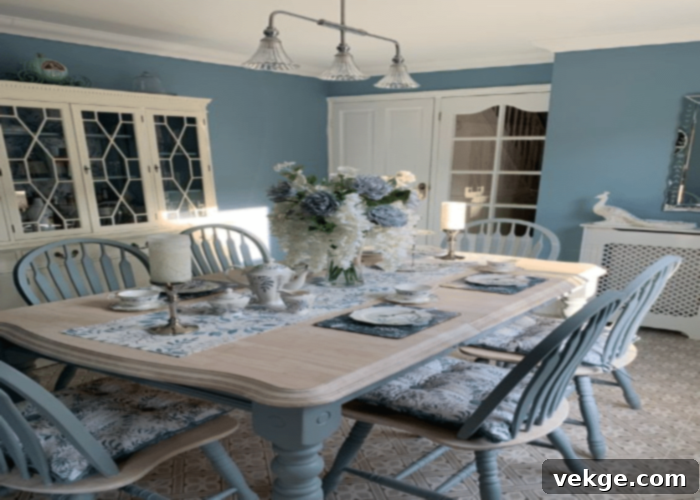
The dining table serves as a central gathering point in many homes, and its design elements are essential for a cohesive look. If you already have a dining table, leverage dining tablecloths, runners, or placemats to introduce colors and textures that complement the off-white paint in your house. Consider rich blues, deep greens, or even a subtle geometric pattern for a contemporary feel. For the table itself, materials like solid wood (light or dark tones), sleek glass, or even a modern concrete finish can create distinct styles. If purchasing a new table, think about its impact on the overall room. A rustic farmhouse table can introduce warmth, while a minimalist design maintains a modern edge. Pairing the table with the right lighting fixture above can further define the space and enhance its inviting atmosphere.
8. Seating Solutions: Chairs and Seating Furniture

Chairs, whether dining chairs, accent chairs, or sofas, are critical for both comfort and aesthetic appeal in any interior design scheme. When harmonizing with off-white walls, selecting the right chair color and material can significantly impact the room’s character. For a sophisticated and grounded look, opt for chairs in classic colors like black, deep brown, or rich leather. These provide a strong contrast that grounds the lighter walls. If you prefer a lighter palette, various shades of gray—from charcoal to light heather—offer a chic and versatile option. Grey chairs create a soothing, contemporary feel that blends seamlessly with off-white. While white chairs might seem like a natural choice, they can be prone to showing dirt easily, making grays, beiges, or even subtle patterns more practical and equally stylish alternatives. Consider the texture of the upholstery—velvet, linen, or woven fabrics—to add another layer of sensory appeal.
9. Natural Warmth: Wooden Furniture Elements
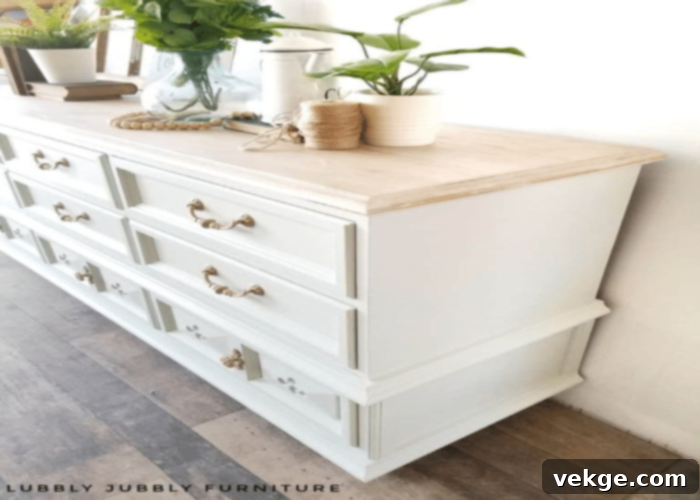
Wooden furniture brings unparalleled warmth, texture, and a touch of nature into any home, whether it’s a grand dining table, an elegant armoire, a practical bookshelf, or decorative showpieces. While the natural beauty of wood tones is often cherished, you have various options to ensure they complement your off-white walls perfectly. Light-colored woods like maple, ash, or light oak can enhance the airy feel of off-white spaces, offering a subtle contrast that maintains brightness. For a more grounded and traditional look, darker woods such as walnut or mahogany provide a rich, sophisticated counterpoint. If you desire a different aesthetic, many wooden pieces can be painted to match or accent your off-white surroundings. Consider painting wooden cabinets or shelving units in a slightly contrasting neutral or a muted color to add a personalized touch. The interplay of natural wood grains and off-white creates a timeless and inviting atmosphere that is both elegant and comfortable.
Conclusion
Choosing off-white for your home’s walls is a declaration of sophistication and versatility. This guide has provided you with a comprehensive roadmap to match your furniture seamlessly with off-white paint colors, transforming your house into a haven of style and tranquility. The off-white palette, with its inherent calmness, defines serenity, harmony, and peace, leaving a soothing effect on everyone who enters your space. By carefully considering the suggestions for your kitchen, bedroom, living areas, and decorative elements, you can craft interiors that feel both cohesive and deeply personal.
Remember, interior design is an art form, and these tips are merely a starting point. Feel empowered to experiment with your own creative flair, mixing and matching textures, colors, and styles to find what truly resonates with you. Ultimately, the goal is to create a home that reflects your personality and brings you joy. How do you like to match your furniture with the off-white paint color in your house? We’d love to hear your unique ideas and opinions in the comment section below!
Frequently Asked Questions About Decorating with Off-White
What Color Furniture Matches Best with Off-White Walls?
Off-white walls are exceptionally versatile, acting as a superb neutral backdrop for a vast array of colors. For furniture, some of the most stunning pairings include rich and regal tones like deep maroon, sophisticated navy blue, opulent gold, and delicate dusty rose. These colors create a beautiful contrast, adding depth and warmth to the off-white canvas. Additionally, earthy tones, various shades of gray, and natural wood finishes also harmonize beautifully, offering a refined and inviting aesthetic.
What Wall Paint Colors Go Well with Off-White Furniture?
If your furniture is off-white, you have an incredible opportunity to introduce bolder wall colors to create striking focal points and visual interest. Off-white furniture serves as a magnificent base for vibrant hues such as emerald green, deep forest green, bright orange, or even a playful coral. For a softer, yet equally charming look, consider pairing off-white furniture with powder blue, baby pink, or a gentle sage green. These combinations allow your off-white pieces to stand out while being enveloped in a complementary and engaging color scheme.
Can You Mix White Furniture with Off-White Walls?
Absolutely, mixing white furniture with off-white walls is not only permissible but often results in a classic and highly sophisticated aesthetic. White and off-white are considered an iconic color combination, offering subtle variations in tone that add depth without harsh contrast. This monochromatic approach creates a serene, expansive, and incredibly chic palette. To prevent the space from feeling too sterile, incorporate different textures through fabrics, throws, and natural elements like wood or plants. This layering adds visual interest and warmth to the elegant pairing.
Does Gray Furniture Go Well with Off-White Walls?
Yes, gray furniture and off-white walls form one of the most versatile and popular color combinations in modern interior design. Gray, with its diverse neutral undertones (cool, warm, or true neutral), beautifully complements the understated elegance of off-white. This pairing creates a soothing, sophisticated, and contemporary atmosphere that feels both calm and stylish. Beyond various shades of gray, other excellent neutral partners for off-white include beiges, tans, blacks, and browns. These combinations offer endless possibilities for creating a balanced and inviting home environment.
How Do I Add Warmth to an Off-White Room?
While off-white can sometimes lean cool, there are many ways to infuse warmth into an off-white room. Incorporate natural wood furniture with warm undertones (like cherry or oak), add textiles in rich colors (such as rust, mustard, or terracotta) or soft, tactile fabrics (like velvet, wool, or faux fur). Introduce metallic accents in gold, brass, or copper. Strategically place warm-toned lighting (around 2700K-3000K color temperature). Finally, add living plants and natural textures like wicker or rattan to bring organic warmth and life into the space.
What are the Different Undertones of Off-White Paint?
Off-white paints are rarely just “off-white”; they often carry subtle undertones that can drastically change the mood of a room. Common undertones include:
- Yellow/Cream: These off-whites are warm and inviting, often feeling traditional or cozy.
- Pink/Peach: Also warm, these can create a soft, romantic, or sophisticated blush effect.
- Gray: These off-whites can lean cool, creating a crisp and modern look, or be more balanced for a versatile neutral.
- Green: Subtle green undertones can make an off-white feel fresh, organic, and calming.
- Blue: While less common, blue undertones can make an off-white feel very crisp, cool, and clean, reminiscent of coastal styles.
Understanding these undertones is crucial for selecting furniture and decor that truly harmonizes with your walls.
